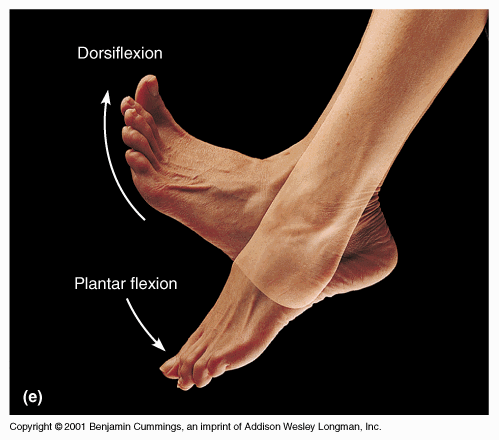Ankle dorsiflexion restriction is an important issue that can be easily missed or ignored in training. If not addressed, it can have a negative impact on sports performance and injury risk. From a weight room point of view where this can have the biggest impact is with your squat depth and mechanics. On the left we see that the knee is able to pass the toe, resulting in a more upright torso and improved squat depth. While the right side is not wrong, it is more of a “hingey squat” and will lead to greater amounts of low back sheering and possible lower back pain. Picture credit:https://www.t-nation.com/training/tip-squat-without-hip-pain A common solution that I see is to raise the heels using plates. This helps bypass the needs for greater amounts of dorsiflexion at the ankle joint and usually results in instantly improved technique and greater depth. I love this option but it does not mean we should not work on improving the restriction at the ankle, especially with athletes. It serves as a crutch, and how wants to be on crutches their whole life? From a sports performance point of view, limited ankle mobility can reduce power production in athletic movements such as sprinting and jumping. To get into optimal positions for acceleration (first phase in sprinting), an athlete needs to be able to get into greater degrees of positive shin angle. This is very challenging if you don’t have the required ankle mobility. The image on the L shows the shin moving forwards the foot. One the R there is less movement of the shin towards the foot. Picture credit:http://miguelaragoncillo.com/2016/01/20/4-methods-to-improving-speed-qualities/ The ankle joint can also act like a spring, helping the body to be propelled through space, such as a jump. The more you coil spring, the more force it is going...
When 'Sport-Specific' Training Isn't Specific to Sport
- Chris Collins
- Training
- 1470 Hits
- 9 Comments
-
Often times when we step foot in the gym it's with the intent at getting better at something. Maybe we want to accelerate our fat loss goals (a big one at this time of year). Or maybe we want to improve our joint function and move a little bit better. And then sometimes the goal is to perform better. Specifically with respect to sports. And this is my passion. Don't get me wrong it's very satisfying to hear of someone who's had shoulder pain for years tell you how they now sleep through the night because digging their elbow into the mattress to turn over doesn't wake them up anymore. (hello AV!) Or someone else who tells you how their hip pain has improved enough they can finally make a trip to their home country where there was not an unbandance of modern plumbing and thus had to be able to maintain a static deep squat. (BG will vouch for me on this one!) And then there has been countless stories of the many who have lost pounds and inches off their bodies. How their confidence and energy are at all time highs and life hasn't been better for them. These are all the things that make getting up when it's still cold and dark out that much easier. But when it comes to training for performance there's no comparison. That's when it gets fun for me. And here's the interesting thing. Sports performance and sports training are completely different. What? How can that be? Wasn't sports training supposed to be as 'sports-specific' as possible? (I put that term in quotes because it can so many different things to do different people) Actually no. Sports training is quite distinct from sports performance. And here's how. 1. Sports performance is on the...
10 Things to Avoid Doing During Your Workout - Part III
- Chris Collins
- Training
- 1522 Hits
- 6 Comments
-
And now here's the final installment in the 3 part series 10 Things to Avoid Doing During Your Workout. 8. Elevating your heels during squats. Have you seen this done in the gym? Maybe you've done it before as well. You perform a squat and realize that your heels lift off the ground as you reach full depth. So you've got two options. One is to limit you range of motion to only go as low as your heels stay in contact with the ground. The other option is to put a shim under your heels so that they are always in contact with something as you lower yourself. And since you're not a wuss you opt for option #2. Because in order to get the best leg development you need to go full depth you need something under your heels to do so. But here's the problem. As you lower yourself into a squat your body is going into pronation and flexion. You are reducing the force of the lift through your joints and muscles. This energy is being loaded up to be released during the upwards phase of the motion. As you lower yourself the hips flex, the knees flex and the ankles flex. And as you stand up the hips and knees extend. During the upward motion the ankles plantar flex. And during the descent it dorsiflexes. When you put a plate or a shim under your heels you put the ankle into plantar flexion. As you start the descent of a squat you need the foot to go into dorsiflexion which is the opposite of the set up you've just established.And the body works as a series of chain reactions. So as one group of joints and muscles loads up under force this triggers the neighbouring joints and muscles to prepare...

